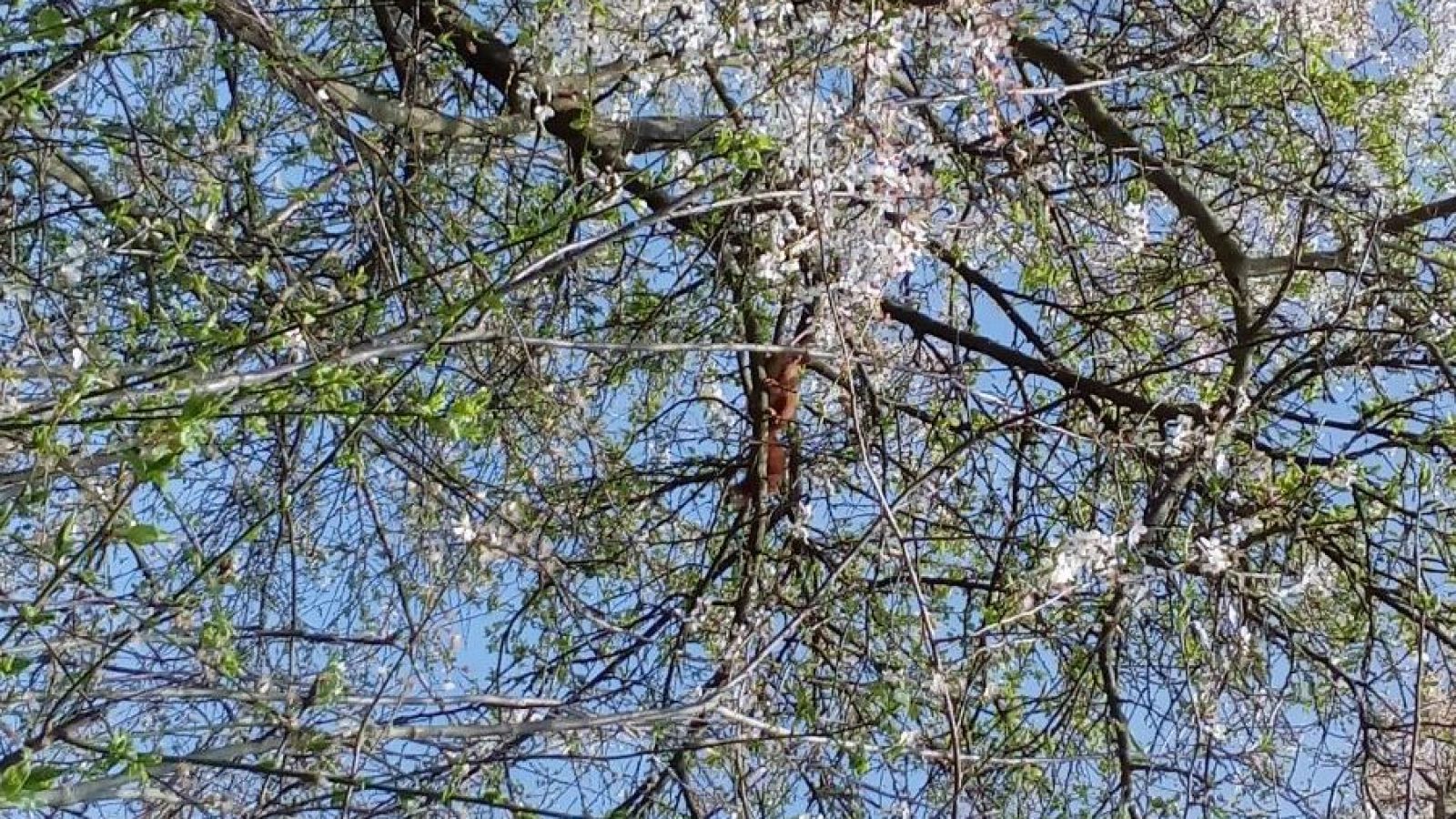It’s leaf day! Around our house that means that the baby leaves are finally big enough to camouflage the highschool up the street. There’s nothing wrong with the highschool, they keep it well maintained, but I prefer to look at leaves. The city where I live plants a lot of trees free of charge. Technically they sit on city land (which is about 5 meters in from the center of the street), but they become the property and responsibility of the homeowner. About 20 years ago they planted red maples down my street and I happened to be home when they got to my house. It was near 5 pm and it had obviously been along day for the lads. There were only 2 trees left in their trailer and they were about to plant one of them in my side yard when I decided to ask if I could have them both. One fellow looked at the trees, looked at my yard, looked back at the trees again and shrugged. “Sure, why not” he said as he grabbed his shovel and started to dig. For once, I was in the right spot at the right time and was bold enough to open my mouth and ask for what I wanted. And it worked. Those 2 trees are now big and strong and shade my house all day long. Lucky me.
Tree rings are among the most direct ways of measuring past climate because trees are sensitive to soil moisture. In drier years, trees grow more slowly and the annual rings that are recorded in their trunks become narrower. By comparing overlapping tree-ring patterns in wood that grew at different times on different continents, scientists have gradually built up “drought atlases” that show changes in moisture distribution dating back to the year 1400 or, in some areas, even earlier.
Drought atlases are nothing new, but using trees to measure the effects of drought across time and region is new science and it’s showing some startling trends.
The scientists found that after centuries of normal variations during which some places alternately became wetter or drier relative to each other, an additional effect on moisture emerged around 1900 that is consistent with climate change. Over all, the data show that much of North America, Australia and the Mediterranean have been getting drier over the past 120 years while parts of Asia, including India and western China, have been getting wetter.
The effect was especially pronounced during the first half of the 20th century, but became more subdued between 1950 and 1975. Since then, it has accelerated. The scientists posit that a huge increase in the release of sulphates and other airborne chemicals in the postwar era served to temporarily counteract the effect of greenhouse gases by deflecting sunlight and promoting cloud formation. This countertrend later subsided after air-quality regulations went into effect in North America and Europe.
The results of this study help confirm that human activity is directly related to global climate change, although trees in the southern hemisphere were not included because their growth patterns are not as seasonally visible.
So it seems that trees are helping to relate the story of climate change in new ways. I’m not surprised. Trees have proven to be one of mankind’s best natural resources and now they’re talking to us in ways we can understand. Whether people will listen is another matter.


















